Nevruz
NEVRUZ
Nevruz Celebrations in Türkiye and Central
Asia
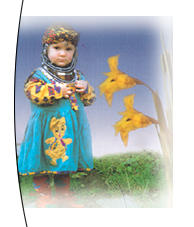 Nevruz, a combination of Persian words Nev (New) and Ruz (Day), means the new
day and it is celebrated as New Year's day by Turks living in Central Asia,
by Anatolian Turks and Persians. It is March 22nd according to the western and
March 9th according to the moslem calendars, when the day and night are equal.
Nevruz, a combination of Persian words Nev (New) and Ruz (Day), means the new
day and it is celebrated as New Year's day by Turks living in Central Asia,
by Anatolian Turks and Persians. It is March 22nd according to the western and
March 9th according to the moslem calendars, when the day and night are equal.
Nevruz, or Newday
besides being the symbol of nature's release from winter and arrival of days
of affluence and abundance, is also accepted as a day which reflects the vitalities,
new beginnings and thresholds in the lives of societies.
Nevruz which is
celebrated by each society with a cause specific to it, is regarded as a day
of salvation by the Turkish folk and is accepted in relation with Ergenekon
or Bozkurt (Gray Wolf) legends.
According to this
legend; foreign tribes declaring war on Gökturks won by cheating. Those Gökturks
which manage to survive the fighting alive passed through steep mountains and
settled at a fertile valley where nobody could find them. In time, they multiplied
at this site called Ergenekon. As their numbers increased, the valley could
no longer sustain them, and they melted the iron mountain surrounding them with
fire and leaved their land and dispersed. The day Ergenekon is left behind is
accepted as the beginnng of the new year. In later times, on that particular
day Göktürk Kings would hammer a hot iron to symbolize the day. This date is
accepted as a day of salvation for the Turks and is equaled to the awakening
of the nature.
In Anatolia, Nevruz
was celebrated with vital traditions starting with the Seljuks, continuing with
Ottomans and reaching us today.
In the days of
the Seljuk King Melikşah a calendar was prepared taking Nevruz as the New Years
day. This callender, reflecting the king, is called "Takvim-i Meliki", "Takvim-i
Sultani"and "Takvimi Celali"
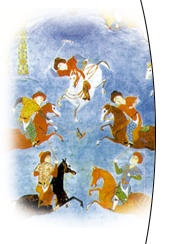 Ottoman Sultans paid special attention to Nevruz. Poems in the form of "gazel"
and "kaside" and called Nevruziye were presented to the sultans and the statesmen.
On Nevruz day the chief astrologer of the Sultan would give him the new calendar
and the tip he recieved on this occasion was called "Nevruziye Bahşişi". Taffies
made with various spices called Nevruziye would be offered to the sultan families
and the dignitaries and visits would be organized.
Ottoman Sultans paid special attention to Nevruz. Poems in the form of "gazel"
and "kaside" and called Nevruziye were presented to the sultans and the statesmen.
On Nevruz day the chief astrologer of the Sultan would give him the new calendar
and the tip he recieved on this occasion was called "Nevruziye Bahşişi". Taffies
made with various spices called Nevruziye would be offered to the sultan families
and the dignitaries and visits would be organized.
Nevruz, which
is also given names such as "Nevruz-i Sultan", "Sultan Nevruz", "Navrız", "Mart
Dokuzu" in Anatolia is also accepted and celebrated as the birthday of Prophet
Ali; the marriage day of Prophet Ali and Fatma; the return of Prophet Mohammed
from his farewel hadj, and the day he designated prophet Ali as his khalif.
With the available
information, it is not possible to explain Nevruz from a single source. Nevruz
is celebrated within a large geography spanning from Middle East to Asia and
has identified with and symbolized according to the unique cultural values of
each nation.
Some examples
of traditional celebrations of the Nevruz holiday are given below :
Nevruz is known
as "Mart İpliği" (March Thread) among the Taurus Türkmens of Mersin - Silifke
region and pieces of cloth are tied to the trees. On the Nevruz day trips are
taken to the high plateaus. Those living in houses located there, pay host to
the visiting guests. The visitors fire guns to signal their arrival and it is
answered with a single shot fired by the leader of the plateau settlers. Later,
mutual celebration firing continues and people express their good will by saying
"Happy Nevruz and may your seed be plenty and good for you" to each other. That
year the owner of a herd with 20 lambs or kid kills a sacrificial animal, which
is cooked and consumed there.
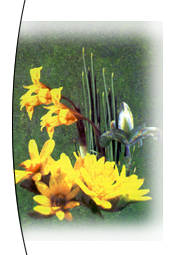 Among Tahtacı Türkmens, Nevruz is known as "Sultan Nevruz". It is celebrated
on March 9th of the old (moslem) calender and an excursion is made to the plateaus.
This tradition has given birth to the folk saying "After 9th of March mountains
get visitors". On that day everybody wears their new clothes, spruce up and
visit the cemeteries.
Among Tahtacı Türkmens, Nevruz is known as "Sultan Nevruz". It is celebrated
on March 9th of the old (moslem) calender and an excursion is made to the plateaus.
This tradition has given birth to the folk saying "After 9th of March mountains
get visitors". On that day everybody wears their new clothes, spruce up and
visit the cemeteries.
At Gaziantep and
its environs March 22nd is called the day of Sultan Navruz. According to the
folk belief, Sultan Navruz is a beautiful girl and moves from west o east on
the night which joins March 21st to March 22nd. According to another belief
it is a dervish flying disguised as a bird. It is believed that all the wishes
of those who are awake on the Nevruz night at the time Sultan Nevruz passes
will come true.
In some villages
of the Arguvan District of Malatya people celebrate Nevruz as the feast of "Winter
is Over".
In Ağrı and its
environs young people make a wish that night, and later by listening behind
the doors and interpreting the conversations they hear, try to find out whether
or not their wishes will become true.
In another practice,
on that night an unmarried young man eats half of a pastry baked from salted
dough called "tuzlu gıllık" and goes to bed without drinking any water. It is
believed that he will be marrying the girl who offers him water in his dream.
Next day he puts the remaining half of the pastry on the chimney or the roof
of his house. If a crow grabs the pastry, and rests on a roof top to eat it,
it is believed that the young man will marry the daughter of that house or,
if the crow does not stop but flies away that he will be marrying someone from
afar.
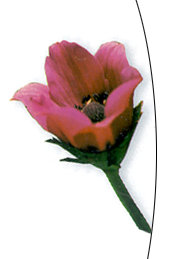 At Kars, the young girls and boys who gather at a house in the evening send
a little child to fetch some water. The child brings a bucket of water without
talking and without looking back. Coloured threads and pins, representing those
who are there are thrown into the bucket. It is believed that the owners of
threads and pins which entangle would be marrying each other.
At Kars, the young girls and boys who gather at a house in the evening send
a little child to fetch some water. The child brings a bucket of water without
talking and without looking back. Coloured threads and pins, representing those
who are there are thrown into the bucket. It is believed that the owners of
threads and pins which entangle would be marrying each other.
Around Tunceli,
men smear their foreheads with black and go to water springs. They clean out
the black marks there, pray and make wishes. There are other practices which
are oriented towards wishing protection from harm and sorrow.
In Iğdır and environs
on the night which March 19th turns into March 20th girls and boys make a wish
to God and wash in the river and must sink themselves at least three times.
Also, one is supposed to rise early in the morning and drink fresh water and
to give fresh water to the animals.
People put on
their new clothes and after the Feast prayer knock hard boiled eggs.
Even those who
have just lost a member of their family are expected to join the festivities.
To mourn on that day is considered as a sin.
Nevruz is celebrated
on March 14th at Giresun and is known as "Mart Bozumu". On that day people rise
very early and fetch water from the nearby rivers which they sprinkle over the
animals.
In Edirne during
the Sultan Nevruz festivities which are held on March 22nd, old straw mats are
burned and people jump over them chanting "March In, Flea Out".
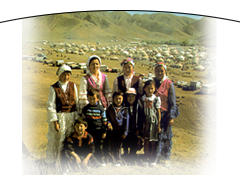 In Kırklareli, Nevruz is celebrated as "Mart Dokuzu" (Nine of march). On that
day people go to picnics with painted eggs and food such as "börek" and "lokma"
where they eat and have fun.
In Kırklareli, Nevruz is celebrated as "Mart Dokuzu" (Nine of march). On that
day people go to picnics with painted eggs and food such as "börek" and "lokma"
where they eat and have fun.
In Urla district
of İzmir Nevruz is celebrated with "March Nine Festivities", in Tire district
with "Sultan Nevruz Holiday". In Uşak it is celebrated with names such as "Year
is Renewed".
To narrow down
the traditional Nevruz celebrations in our country to these examples would mean
a narrowing down and constraining of Nevruz tradition in Anatolia. The examples
presented here are only a small selection of existing practices.